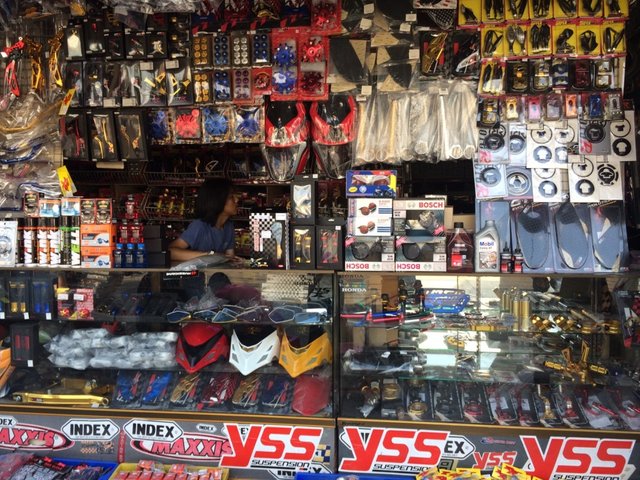Go To Our Motorcycle Shop for Expert Suggestions and High Quality Products
Go To Our Motorcycle Shop for Expert Suggestions and High Quality Products
Blog Article
Comprehending the Vital Parts of a Motorbike: A Comprehensive Overview for Fanatics
For motorbike lovers looking to raise their riding experience and ensure their bikes run smoothly, comprehending the necessary components of a bike is critical. Each component, from the engine's detailed functions to the important duty of the stopping systems, not only affects performance however also safety and comfort.
Engine Components

The camshaft plays a crucial function in managing the timing of the engine's valves, making sure the specific opening and closing essential for reliable fuel and air consumption, in addition to exhaust expulsion. This timing is critical to maintaining optimum engine efficiency and performance. Furthermore, the carburetor or fuel shot system, depending on the bike version, is in charge of blending air with gas in the correct proportion for combustion.
The air conditioning system, either air or liquid-based, functions to keep the engine's temperature within functional limitations, stopping getting too hot and ensuring longevity - moto parts nz. Each part, meticulously made and incorporated, adds to the smooth procedure of the engine, specifying the bike's power outcome and overall performance
Transmission System
Essential to the motorcycle's capability, the transmission system guarantees reliable power transfer from the engine to the wheels. This system comprises a number of crucial components, consisting of the clutch, gearbox, and last drive, each playing a vital duty in converting the engine's power into motion. The clutch, normally run by a hand bar, offers to disengage the engine and engage from the transmission, permitting smooth equipment adjustments and controlled velocity.
The transmission, usually referred to as the transmission proper, consists of a set of gears that cyclists can manually shift with to adjust the bike's speed and torque outcome. These equipments are organized in a sequence that enables the motorcycle to accelerate efficiently and keep ideal engine efficiency throughout numerous speeds. A lot of bikes make use of a consecutive gearbox, requiring the rider to change gears in a fixed order.
Braking Systems
While understanding the transmission system is key to using a bike's power, equally important is the ability to regulate and stop that power properly, which is where braking devices come into play. Brakes are vital for safety and performance, supplying the biker with the necessary control to navigate different terrains and conditions. Generally, bikes feature two sorts of stopping systems: disc brakes and drum brakes.
Disc brakes are more common in contemporary motorbikes due to their superior efficiency. This system supplies much better warm dissipation, consistent performance, and boosted stopping power, especially in damp conditions.
Conversely, drum brakes, though less usual, are still discovered in some motorbikes. They function by pressing brake shoes against the internal surface of a drum connected to the wheel. While usually much less efficient in warmth dissipation and stopping power, drum brakes are simpler and much more affordable.
Recognizing these stopping systems' nuances permits cyclists to keep their motorbikes appropriately and appreciate the engineering that ensures reliable and safe quiting.
Suspension and Guiding
Suspension and guiding systems are crucial components that substantially influence a motorcycle's handling and experience comfort. The suspension system, containing forks at the front and shock absorbers at the rear, takes in road irregularities, boosting security and control. Front forks, upside down or usually telescopic, compress and rebound to minimize effects, while rear shock absorbers preserve tire contact with the road, vital for grip and safety and security.
Guiding, focused around the handlebars, links the motorcyclist to the motorbike's directional control. The steering head bearings make certain smooth operation, permitting accurate maneuverability. Appropriate positioning and maintenance of these bearings are vital for predictable guiding reaction and decreasing motorcyclist tiredness.
The suspension's adjustability is one more vital element; preload, damping, and rebound settings permit customization to suit numerous riding problems and styles. This versatility is essential for maximizing performance, whether navigating urban streets or taking on tough trails. Technologies like digital shock absorber provide real-time modifications, boosting trip top quality throughout diverse terrains.

Electrical Systems
After making certain a smooth and regulated experience via reliable suspension and guiding systems, attention turns to the electrical systems, an essential element of contemporary bikes. These systems play a critical role not only in starting the engine but likewise in powering numerous elements that enhance the capability and safety of the bike.
At the heart of a bike's electric system is the battery, which shops electric energy essential for beginning the engine and powering complementary systems his comment is here - motocross gear nz. The generator or generator, paired with the rectifier-regulator, guarantees the battery remains billed while the motorbike functions, converting power website link right into electrical energy and keeping voltage degrees
The ignition system, one more important element, is accountable for igniting the air-fuel combination in the engine's cylinders. Modern motorcycles frequently utilize a digital ignition system, supplying better efficiency and integrity contrasted to standard systems.
Illumination systems, including headlights, tail lights, and indicators, are likewise important, making sure exposure and safety for the biker. Extra electronic components such as sensors, control devices, and shows contribute to innovative features like gas shot administration, anti-lock stopping systems (ABS), and electronic dashboards, further enhancing the riding experience.
Conclusion
A thorough understanding of a bike's vital parts, including the engine, transmission system, stopping mechanisms, suspension, guiding, and electric systems, is crucial for lovers intending to optimize efficiency, security, and comfort. Proficiency of these components permits educated decisions concerning maintenance and upgrades, eventually boosting the riding experience. By integrating this knowledge, motorcyclists can ensure their motorbikes run at peak efficiency and integrity, thus maximizing both pleasure and longevity of their vehicles.
For bike fanatics looking to boost their riding experience and guarantee their bikes run efficiently, comprehending the crucial elements of a bike is extremely important.Indispensable to the motorbike's capability, the transmission system ensures reliable power transfer from the engine to the wheels.While understanding the transmission system is key to utilizing a motorcycle's power, just as important is the capacity to manage and quit that power successfully, which is where stopping mechanisms come into play. Typically, bikes include websites two types of braking systems: disc brakes and drum brakes.
A complete understanding of a bike's essential parts, including the engine, transmission system, stopping devices, suspension, steering, and electrical systems, is vital for enthusiasts intending to optimize safety and security, comfort, and efficiency.
Report this page